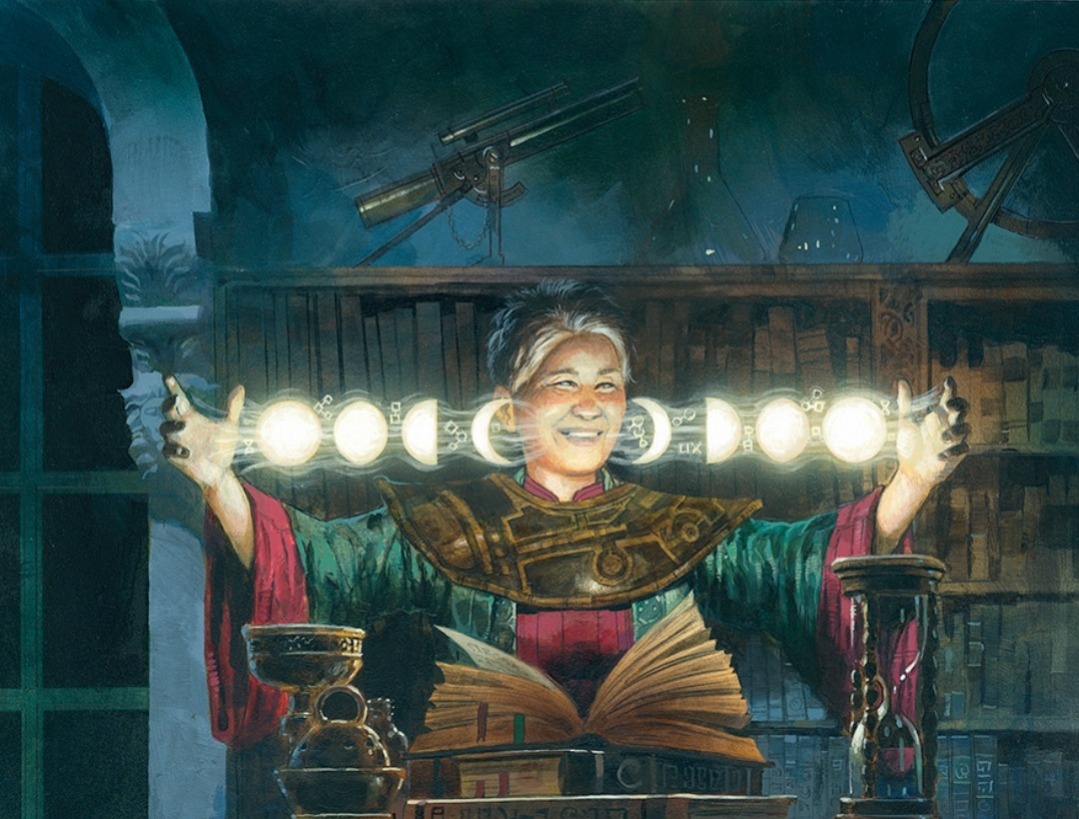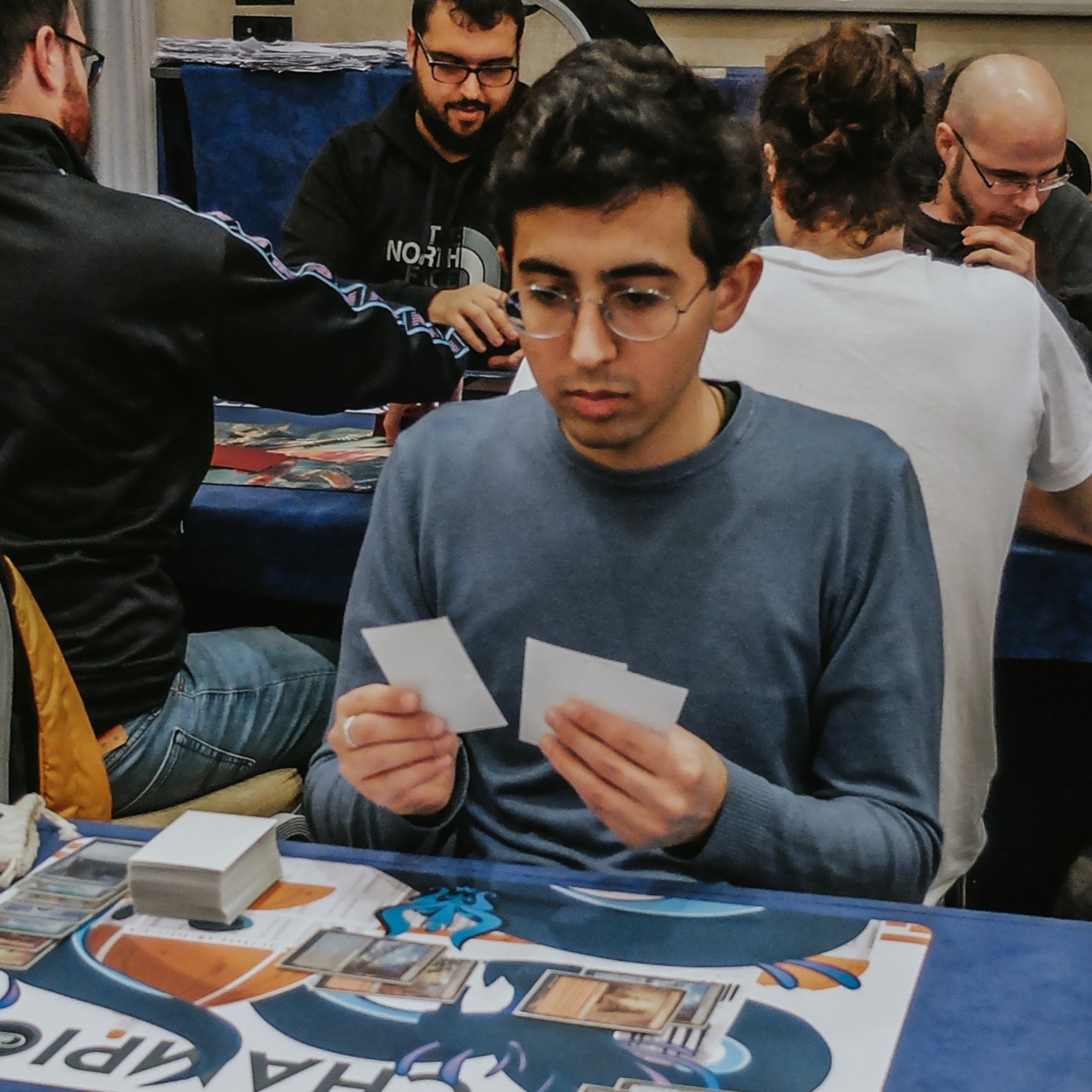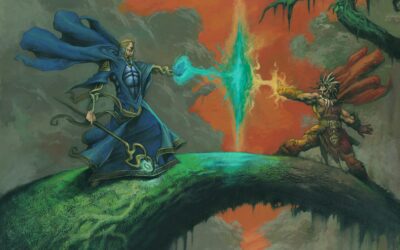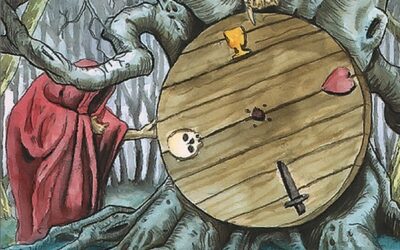Welcome to the third part of this series of articles, where I show and comment on the data I’ve gathered between Sanctuary’s ban and the release of Commander Masters from my 3452 Pauper matches. If you missed the first and second parts, you should check them out to get familiar with the dataset, but as far as topics go, each part should be fairly independent. The last part will be released right before Paupergeddon (at the end of next week).
In this article, I will show some of the effects of the metagame flow on three different decks, and then show a couple of extra charts on-theme.
In what follows, each deck will have its chart. On the x-axis, you will have the match number, while on the y-axis you will have win% in the last 60 matches. To see an example of what this means, let’s take a point from the Affinity chart. There is a point at (590, 61.7%). That means that in matches number 531-590 I’ve had a 61.7% win rate, i.e. I’ve won 37 and lost 23 of them. The matches are numbered relative to the single deck: in this example, match number 590 is the 590th match I’ve played with Grixis Affinity.
Before getting started, I’ll also remind you that all the data presented here is antecedent to the release of Commander Masters.
Grixis Affinity
I’ve played three versions of this deck. They are very similar except for one detail: the countermagic slots, which I alternated between Counterspell, Metallic Rebuke, and Spellstutter Sprite. You can find examples of my lists on my Goldfish page or my 2022 brews recap on Twitter. I’ve marked on the chart the moments where I’ve switched between versions.
There is certainly some inherent variance in the way a deck’s win rate moves up and down, but Affinity was the first (and only) deck where I’ve noticed some patterns of behavior that are so consistent and dramatic that I can’t consider them products of variance.
In particular, Affinity is a reactive deck where deckbuilding has the utmost importance because:
A.The engine takes so many slots that your interaction slots are limited and precious
B.The deck sees an average of 24 cards per game (per my game logs), which means that on average it has a 40% chance of seeing a 1-of, a 64% chance of seeing a 2-of, a 79% chance of seeing a 3-of and an 88% chance of seeing a 4-of in a given game, which means that even the slightest decklist changes will affect most games
The direct consequence of this is that when the metagame is uncertain, like after the release of a new set or a ban, Affinity does very poorly. On the contrary, the deck is incredible when your build finally “ticks” and has all the right tools to fight the metagame. You can see dramatic drops in win rate after the releases of Double Masters 2022, The Brother’s War, and Lord of the Rings, as well as after the Initiative ban. These drops are always followed by an equally dramatic rise after I figure out the right build. Some of these changes in my builds are documented in my chart because they involved changing the countermagic slot (and you can see the sharp trend inversions that they produced). On other occasions, I changed other interaction slots and I didn’t track on my sheets what changes I made exactly, so there is no label to mark them, but their effect is visible.
Elves
I don’t see specific patterns in the Elves chart. The deck’s performance was pretty consistent through the eras, with natural dips and rises due to variance and maybe to some changes in the opposing decks. The one lesson I take from this chart is how the win rate was substantially better after the release of Modern Horizons 2, contrary to what one could expect. You can already see it pretty clearly by comparing the two halves of the chart, but I will also tell you that the average pre-MH2 match win rate was 55.0%, and the average post-MH2 match win rate was 62.2%.
Funnily enough, I don’t think that this change had much to do with a metagame shift, as much as with me finally casting aside an old prejudice of mine against Hydroblast in Elves’ sideboard. After the upheaval caused by MH2, I finally felt compelled to run 6-7 Hydroblasts, as opposed to the 0-2 copies that I used to run beforehand. While my preboard game win rate only increased by 3% after MH2, my postboard game win rate increased by 6%.
So, the deck was performing very well for me even in an era where people were already starting to suggest that the deck had been power-crept out of the format. But in those months I had started playing Grixis Affinity too, which had a whole different feel. It was just a matter of time before I would fully switch to Affinity. The breaking point came with Double Masters 2022. I didn’t even get to see how much Elves’s win rate would decrease because I simply gave up on it, given that Burn had just received an upgrade for the most important aspect of that matchup: pressure. I can’t imagine how the deck must feel now, after a year and a half of crazy printing and downshifts, none of which went to the benefit of the sweet pointy-eared people. I feel like the main axis on which Elves has fallen behind is consistency. Years ago, it was normal for Pauper decks to brick, but you would brick just as much as your opponent, so it was fine. Nowadays, every deck is a perfectly oiled machine. Elves will still brick and wait for a Melody topdeck, but the opponents will never stop. Moreover, while interactive decks used to be very slow, and allowed Elves to rebuild after they interacted with its plan, nowadays it’s very easy to present interaction and pressure at the same time, which is a fatal combination for every combo deck, Elves included.
Kuldotha
My journey with traditional Kuldotha Red started great, with a win rate of around 70% for 117 matches. Unfortunately, things took the wrong turn later on. The decline might seem less sharp than the ones you can see in the other charts, but that’s just because there are fewer matches, so the graph is stretched out. The reality is that my downfall was quite decisive.
I don’t have a clear explanation for this, but I can offer three hypotheses. The reality might be an uneven mix of them.
- The metagame caught up with Kuldotha and became more hostile
- My luck ran out
- While I thought I was learning, I picked up wrong habits and started playing the deck worse because I formed wrong ideas about it
I hope it isn’t the third, but it’s hard to know!
Bonus Stats
I would’ve loved to offer some insight about how other variables like die roll impact and mulligan impact have changed in Pauper over time, but I’m afraid my dataset isn’t suited for that level of detail.
What I can offer is two charts that some of you might find mildly interesting. The first one is about the decks I’ve faced in different eras of Pauper. The second one is about my rate of play and win rate in the different eras
If you want to know more about the history of the mtgo leagues’ metagame, you can find out more in my old articles series and the articles by PyotrPavel on Cardmarket. Just to be clear, the data in these articles consists of matches played in every environment. Mtgo leagues are prevalent, but they aren’t the only place I’ve played Pauper in. You will know more about that in the next article.
In the second chart, you can hover over columns for more details about each era.
In the next article, I will share my experiences in all kinds of paper and online Pauper tournaments. After briefly discussing the differences between these environments, I will focus on the online scenes, by measuring the results of my opponents in different tournament categories. I will also show my head-to-head vs all the players I’ve met and showcase the geography of Pauper leagues.








![[ENG Report] Winner Awesome Pauper – Il Labirinto: Francesco Quagliata with Golgari Gardens](https://www.pauperwave.com/wp-content/uploads/2024/01/215-400x250.jpg)


